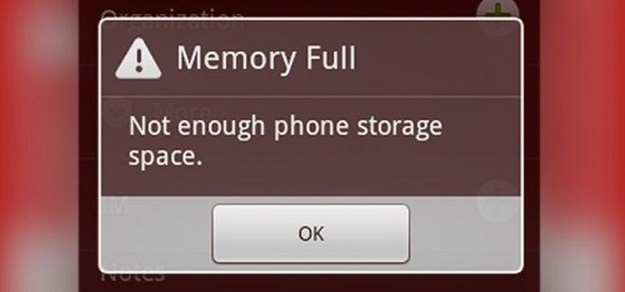As the use of different mobile devices for internet browsing are increasing with each passing day, tech-savvy people use apps for browsing particular websites and blogs. It helps them to find the required products, services or information in an easy way and complete a number of functions.

After realizing the trend of using on-demand and hybrid apps, all prominent business firms try to add more features to their apps and introduce them in the market for the targeted audience. Today’s mobile phone users use smartphones with a memory capacity of 64, 128 and even 256 GB. But, they download so many apps on their devices that a day comes when they hey receive the frightening message: “The memory of the device is full”. Most mobile phone users face this problem around the world.
If you run an Offshore Android App Development Company, this unpleasant situation can affect the volume of business generated by you. Although, customers take several steps to free some space on their mobile devices.
But, as an Android app development company, you must also try to reduce the size of the applications you develop. This will help mobile phone users to use your app without worrying about the consumption of lots of free space on their mobile devices. Here are some practices you can use to reduce app size:
Don’t Miss –
List of Common Android Errors with their Solutions
8 Best Android App Development Tools 2017
Use the Clean Code and Erase Faulty Codes Regularly
While creating android apps, you should use the clean code as far as possible. This eliminates the complexity level of the app and makes it more user-friendly. From time-to-time, you should clean the faulty codes of apps to clear bugs off. Regular cleaning of codes will keep your code in order and shrink the size of the application up to a great extent.
Don’t Attach Too Many Videos to Your App
There are many Android mobile apps that come with a video background. Several apps have many videos on the registration section and entry page. It has become a trend in these days. Adding videos to apps make them heavy and are not justified at all the times. You can replace several videos on your app with pictures and text. It makes your app fast, light and robust and it doesn’t occupy much space when people download them on mobile devices.
Restrict the Use of Amination
Several Android Application Development companies use too much animation while creating apps. They do so with an intention to make the app look different from others and increase its downloading. For example- Airbnb is praised globally for its unique design.
But, when you download this app on your mobile device, it takes 135 MB because of the use of excessive animations. As a matter of fact, animation with many frames increases the size of the mobile application up to a great extent. So, you must restrict the use of animation as far as possible. Use only necessary animation that is needed to meet the needs of the targeted audience.
valuate the Benefits of Third-party Libraries And the SDK
All professional mobile app developers must evaluate the benefits they receive from third-party libraries and the SDK. There is no doubt that you need an SDK to register users and analytics. But, did you ever think about the rest of the features. In most of the cases, you can create the same functionality yourself and save a lot of space. Use Third-party Libraries and the SDK only when they are unavoidable and no viable option is available as a replacement.
Compress Images
Many app developers use beautiful icons and high-resolution images to create user-centric and innovate apps. Using unoptimized images will make your app heavy and bulky. Such apps consume more space on mobile devices. So, choose the right image format as per your needs and trim them. There are many tools available on the internet for this purpose. By compressing images, you can trim their resolution by 60%-70% and reduce the application size drastically.
Avoid the Use of Enumerations
All app developers must keep in mind that even a single enum can add about 1.0 to 1.4 KB of size to your app’s classes.dex file and make it heavy. It makes your app complex and repels the potential customers/visitors. You can use the @IntDef annotation and ProGuard to restrict the use of enumerations.
Trim the Size of Native Binarie
We all know that native libraries and debug symbols are used extensively for the creation of apps. Just conduct an extensive research and find out what users expect from your app. You should remove the debugging symbols from your app as it is not required in the initial weeks once your app is launched. You can debug your app when you see a slowdown in its performance.
Final Words
Android Applications are being used in great numbers. They consume a lot of space on mobile devices. By following the above-mentioned tips, mobile app developers can use to minimize the app sizes and make them more useful for the targeted audience.
